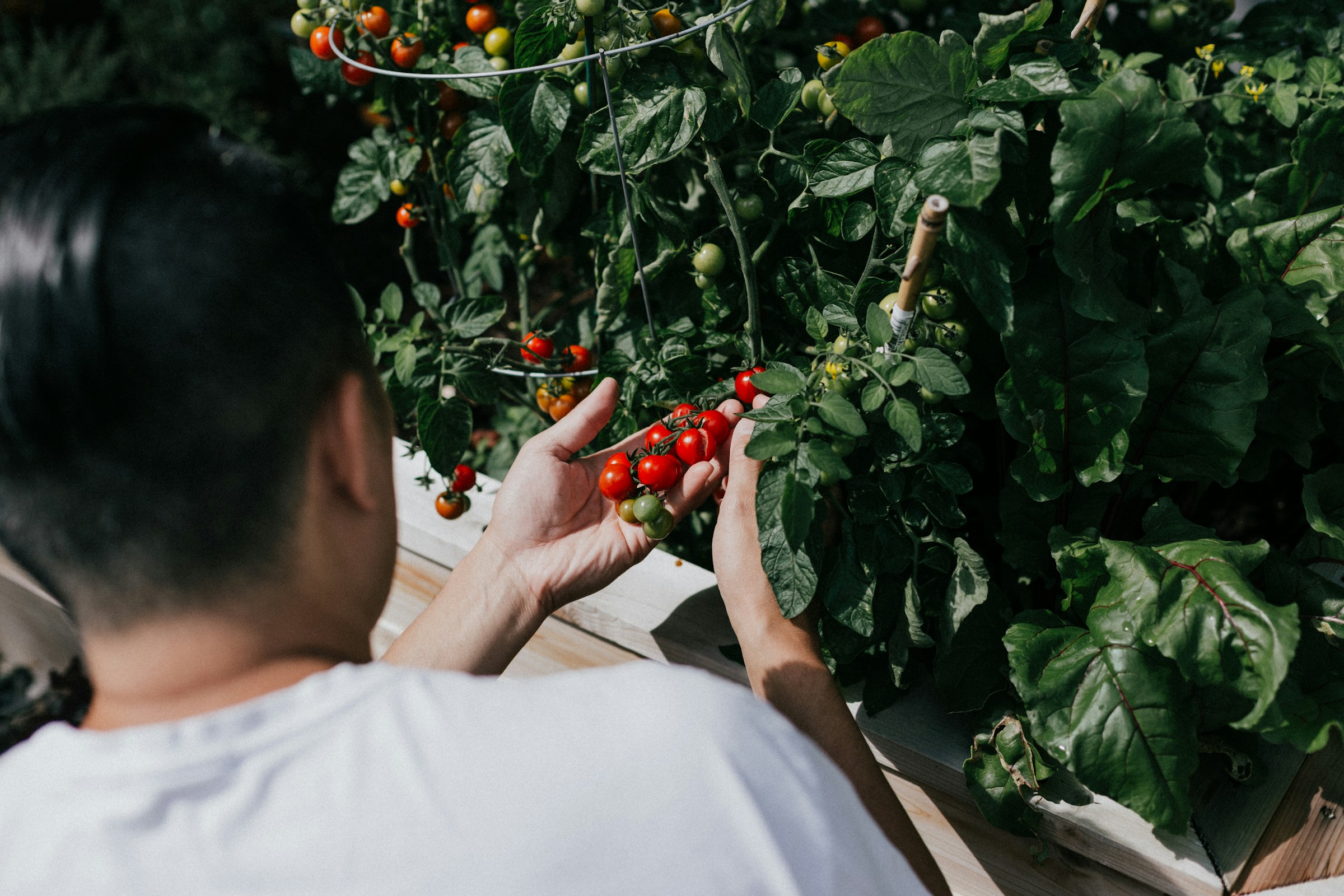Growing your own tomatoes is a rewarding endeavour that not only provides you with fresh, succulent fruits but also brings you closer to nature. As you venture into the world of gardening, you will find that tomatoes are one of the most versatile plants that can be grown in various settings, including a conservatory. This article aims to guide you on the best practices for growing tomatoes in a UK conservatory, covering a range of topics like choosing the right tomato varieties, preparing the greenhouse, planting the seeds, caring for the plants, and dealing with common gardening issues.
Choosing the Right Tomato Varieties
The first step to successfully growing tomatoes in a conservatory is choosing the right variety. Not all tomato varieties will thrive in the unique environment of a conservatory. Some are better suited for pots, while others prefer the open soil in a garden.
A lire en complément : Crafting an Eco-Friendly Rain Garden for Your Coastal Welsh Home: A Complete Guide
For conservatory growing, small and bushy tomato varieties such as ‘Tumbling Tom’, ‘Gardener’s Delight’, and ‘Cherry Cascade’ are often recommended. These types develop well in pots and hanging baskets, making them perfect for conservatory conditions. They also boast a prolific yield, ensuring you have a bountiful harvest from just a few plants.
Remember, the choice of variety also affects the flavour of the fruit, so consider your culinary preferences when choosing the type of tomato to grow. For instance, ‘Gardener’s Delight’ is known for its sweet, juicy fruits, perfect for salads and sandwiches.
Cela peut vous intéresser : How to Create a Pet-Friendly Garden Space in a UK Home?
Preparing the Conservatory for Planting
The success of your tomato plants largely hinges on the conditions in your conservatory. Tomatoes need a minimum temperature of 15°C to grow, and a conservatory can provide the necessary warmth, especially in the unpredictable UK climate.
Before planting, prepare the conservatory by ensuring it’s clean and free from pests. This involves washing the windows to allow maximum sunlight and inspecting the area for any signs of insects or disease.
Consider using pots for your tomato plants. They are easier to manage, and you can move them around to make the most of the sunlight. Ensure the pots have good drainage to prevent waterlogging, which can harm the plants.
For the compost, a blend of peat-free multi-purpose compost and well-rotted manure or garden compost works best. This combination provides the nutrients that tomatoes need to grow and bear fruit.
Planting the Tomato Seeds
Tomato planting begins with the seeds. Start by filling your pots with the compost mix, sowing two seeds per pot, and lightly covering them with compost. Water the seeds gently but thoroughly.
Place the pots in a warm, sunny spot in the conservatory. The seeds typically germinate within 7 to 14 days, but this can vary depending on the variety and conditions. Once the seedlings are large enough to handle, thin them out, leaving only the strongest plant in each pot.
Tomatoes need at least six hours of sunlight each day to grow well. If your conservatory doesn’t get enough sunlight, consider using grow lights to supplement natural light.
Caring for the Tomato Plants
Once your tomato plants have reached about 30cm in height, they will need some additional care. Regular watering is crucial for the plant’s growth and fruit production. However, be mindful not to overwater as this can lead to diseases like tomato blight.
Feed your plants with a high-potassium fertiliser every two weeks once the first fruits start to form. This nutrient is essential for fruit development and can greatly improve the taste and yield of your tomatoes.
As the plants grow, they may need some support. Stake the plants or use tomato cages to prevent them from bending or breaking under the weight of the fruit. Regularly check the plants for signs of disease or pests and take action immediately if you see any issues.
Dealing with Common Tomato Growing Issues
While growing tomatoes can be a joy, it’s not without its challenges. Common issues that gardeners face include pests like aphids and whiteflies, diseases such as tomato blight and blossom end rot, and physiological problems like fruit cracking.
Pests can be controlled through natural means like introducing beneficial insects or using organic pesticides. Diseases, on the other hand, can be prevented by maintaining good hygiene in the conservatory, providing proper care to the plants, and choosing disease-resistant varieties.
Overall, growing tomatoes is a continuous learning experience. Each growing season, you will gain more knowledge and develop your own tricks and techniques. So, get started on your tomato growing journey, and soon, you’ll be enjoying the fruits of your labour.
Utilising Grow Bags and Side Shoots Training
In addition to using pots, another popular method UK gardeners use for growing tomatoes in a conservatory involves the use of grow bags. These are low-cost, space-saving, and can be positioned anywhere in the conservatory with adequate sunlight. Grow bags also allow for excellent root development, as the depth of the bag encourages a healthy root system which ultimately contributes to a better harvest.
To start with, prepare your grow bags by gently shaking and kneading them to break up any compact compost. Cut out the pre-marked planting holes, and you’re good to go. Bear in mind that usually, only two to three tomato plants are recommended per bag to avoid crowding.
As your tomato plants grow, you’ll notice side shoots, also known as suckers, developing in the joint between the main stem and the branches. These side shoots use up the plant’s energy, which could otherwise be used for fruit production. Therefore, it’s advised to pinch off these side shoots when they’re about 2.5cm long to redirect the plant’s energy to the fruits.
Remember, some bush varieties of tomatoes do not require side shoot removal as they naturally produce a bushy growth. Hence, always check the growing instructions for your specific tomato variety.
Enhancing Growth with Companion Planting and Flower Seeds
While growing tomatoes, consider the practice of companion planting. This method involves growing plants together that benefit each other. For tomatoes, good companions include basil, chives, and marigolds. Basil helps to repel pests like whiteflies, while marigolds attract beneficial insects.
Introducing flowering plants into your conservatory can also invite pollinators, boosting tomato production. Sow flower seeds like cosmos, zinnias, or sunflowers, which not only add beauty to your conservatory but also attract bees and other pollinators.
However, always ensure that the companion plants or flowers don’t overshadow your tomato plants, robbing them of the much-needed sunlight.
Conclusion
Growing tomatoes in a UK conservatory is a rewarding experience, from seeing the tiny tomato seeds sprout to watching the mature fruits ready for harvest. By selecting the appropriate tomato varieties, preparing your conservatory rightly, paying attention to planting and care details, and dealing with common tomato growing issues as they arise, your conservatory can become a tomato haven.
Whether you choose to grow your tomatoes in pots, hanging baskets, or grow bags, remember the key factors for success: adequate sunlight, regular watering, nutrient-rich compost, and vigilant pest and disease control.
Through this process, cherish the learnings you gather, and don’t shy away from experimenting with different techniques, be it training side shoots, trying out companion planting, or introducing flowering plants to aid pollination. After all, becoming a seasoned tomato grower is a journey of discovery and mastery.
So, embrace the journey, get your hands dirty, and before you know it, you’ll be savouring the taste of fresh, juicy, homegrown tomatoes right from your UK conservatory. And when you do, don’t forget to share your success, experiences, and tips on social media using the hashtag #TomatoGrowing, inspiring others to embark on their own tomato growing adventures. Happy gardening!
















